How to Make and Store Rendered Chicken Fat (Schmaltz)
I’m sharing a tutorial on how to make and store rendered chicken fat (also known as schmaltz) for later use in traditional home cooking. Schmaltz is rendered poultry fat (usually chicken fat), if you didn’t already know. It’s a common ingredient in Jewish and Eastern European cooking but is gaining popularity in kitchens across the globe.
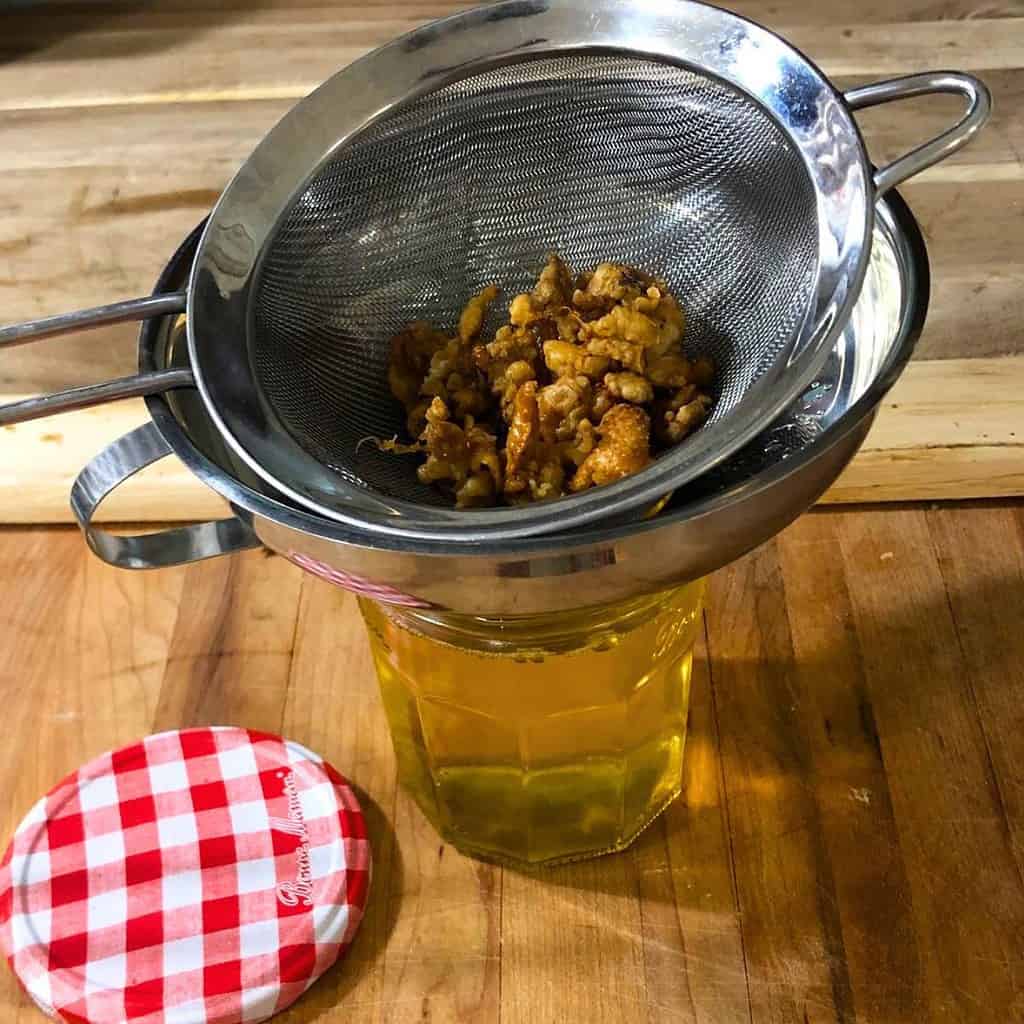
This post contains affiliate links. As an Amazon Associate I earn from qualifying purchases. That means I make a small commission at no cost to you if you place a qualifying purchase through any of the links. Read my full disclosure here. Thanks for your support!
I love to use traditional and healthy cooking fat when I cook. And I avoid vegetable oils because they are so highly processed and are known to have negative health consequences.
Aside from the health benefits, one reason I use animal fats is because we raise and harvest our own meat animals. And I like to save and use as much of the animal as possible, including the fat!
I try not to be wasteful with food and I try to respect the animals that we harvest by using as much as we can.
The other reason I like to use animal fats often is because making butter is hard work! I make butter every year when the cream is richest.
And while I make in excess of 40 pounds of butter each year and store it in the freezer, that’s not enough fat for all the baking and eating that goes on here. So I use rendered animal fats where I can to save on butter. Plus, it means I’m less reliant on grocery stores and don’t need to buy as much cooking oil like olive oil.
Types of Animal Fat
Rendered cattle and sheep fat is called tallow. Lard is rendered pig fat. Rendered poultry fat (duck fat, goose fat, turkey fat, chicken fat, etc.) is called schmaltz.
I make and use rendered fats from the animals we raise and harvest, but I use them for different reasons.
Tallow
Tallow is a very hard fat at room temperature and liquefies at high heat. Occasionally, I will use the liquid fat to deep-fry delicious “nuggets” that the family loves. I don’t say “chicken nuggets” or “beef nuggets.”
I say plain ol’ “nuggets” intentionally because when the kids know in advance that they are having breaded chicken livers for dinner, some aren’t as excited about eating it. But since I don’t ever make fried foods unless it’s “nuggets,” the kids are happy to get it and eat every bite!
Lard
Lard is soft and nearly a liquid at room temperature. I use cold lard most often when I’m baking bread or other dough like pie crusts. It’s also great for greasing loaf pans. And when the lard goes bad (rancid), we still keep it around for greasing hinges, shining shoes, and to make various things waterproof!
I think it was in one of the Little House on the Prairie books, but I remember reading that the kids would make their moccasins waterproof in winter by rubbing greasy fat all over them.
Schmaltz
Schmaltz is also soft at room temperature and has a rich and delicious flavor. I love to melt schmaltz in a small saucepan and drizzle it over the top of root vegetables before putting them in the oven to roast. It gives the vegetables a great flavor and crispy texture.
Schmaltz is a necessary ingredient in Jewish cooking. It makes flavorful matzo balls for matzo ball soup, and is widely used for frying in kosher kitchens and Jewish cuisine.
Is Chicken Fat Healthy?
Chicken fat (also known as chicken schmaltz) is a healthy alternative to other cooking fats and is safe to consume as long as it is from a healthy chicken, and is properly rendered and stored. However, all fats should be used in moderation.
The quality of schmaltz is determined by the quality of the animal and how it was raised. We raise our chickens and turkeys to have the maximum amount of freedom and space they want. They walk wherever they like from sunrise to sunset and eat various seeds and bugs they find. If you’d like more information, I wrote a blog post on how we raise our chickens for cheap.
Pasture-raised poultry have yellow to orange fat compared to industrially-raised poultry. The flavor profile is better, too.
The Nourishing Traditions cookbook states that chicken fat is about 31 percent saturated fat, 49 percent monounsaturated fats, and 20 percent polyunsaturated fats (most of which is omega-6 linoleic acid). You can raise the amount of omega-3 by feeding the chickens more insects.
How to Make Schmaltz
Making schmaltz is an easy project for a beginner home cook.
First, you’ll need a good amount of fat. I like to label and store all animal fats in a ziploc bag in my freezer and keep adding to the pile until I have enough to render down.
I generally save a good amount of poultry fat in an airtight container on chicken harvest days and when I’m canning chicken meat.
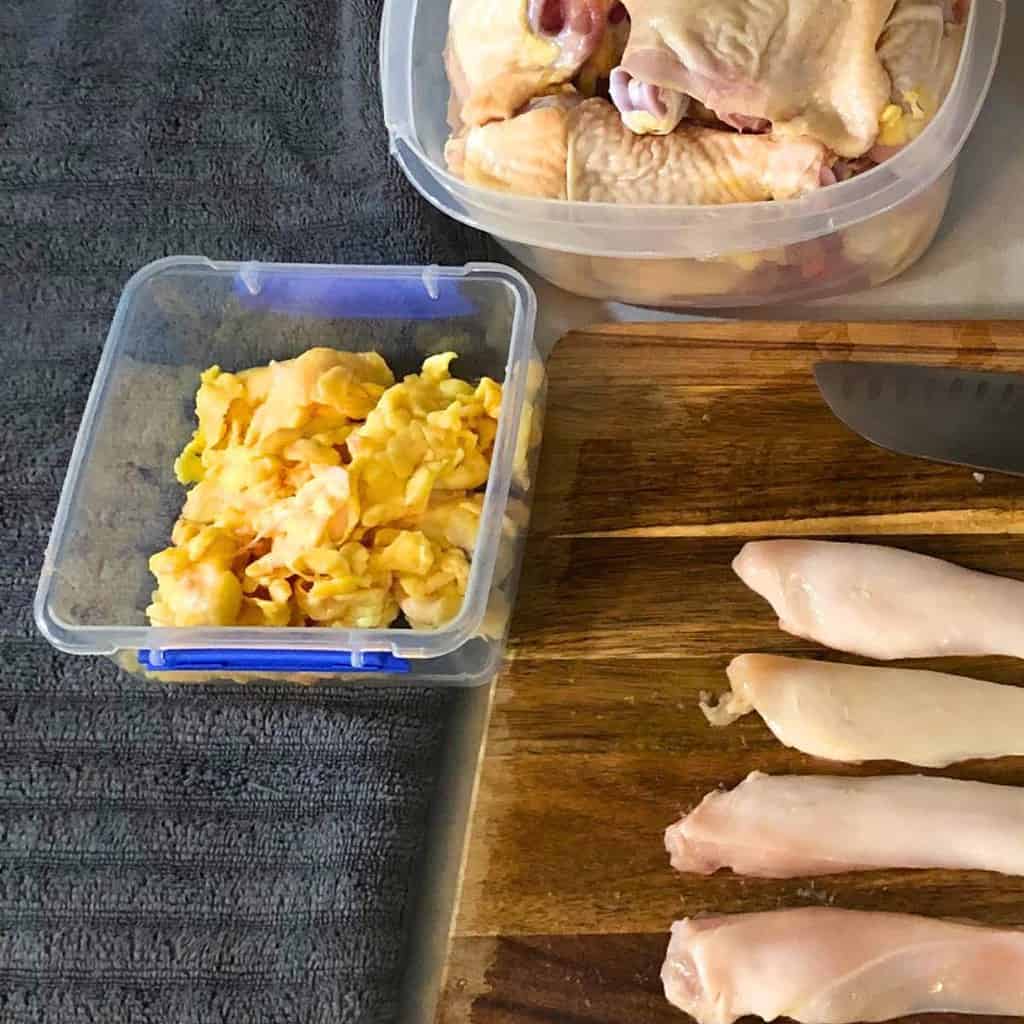
When you’re ready to render your poultry fat, put the fat into a saucepan on your stove over low heat. You don’t want to burn the fat, so start out at the lowest heat setting and adjust the temperature slowly until the fat begins to melt.
Important Tip:
A lot of people will tell you to add a little bit of water to the pot to prevent the fat from burning. I don’t find it necessary to add water when I keep the temperature of the stove low.
Plus, the more water you add, the longer the rendering process will take. Burn off all the water to get a high quality fat that won’t turn moldy.
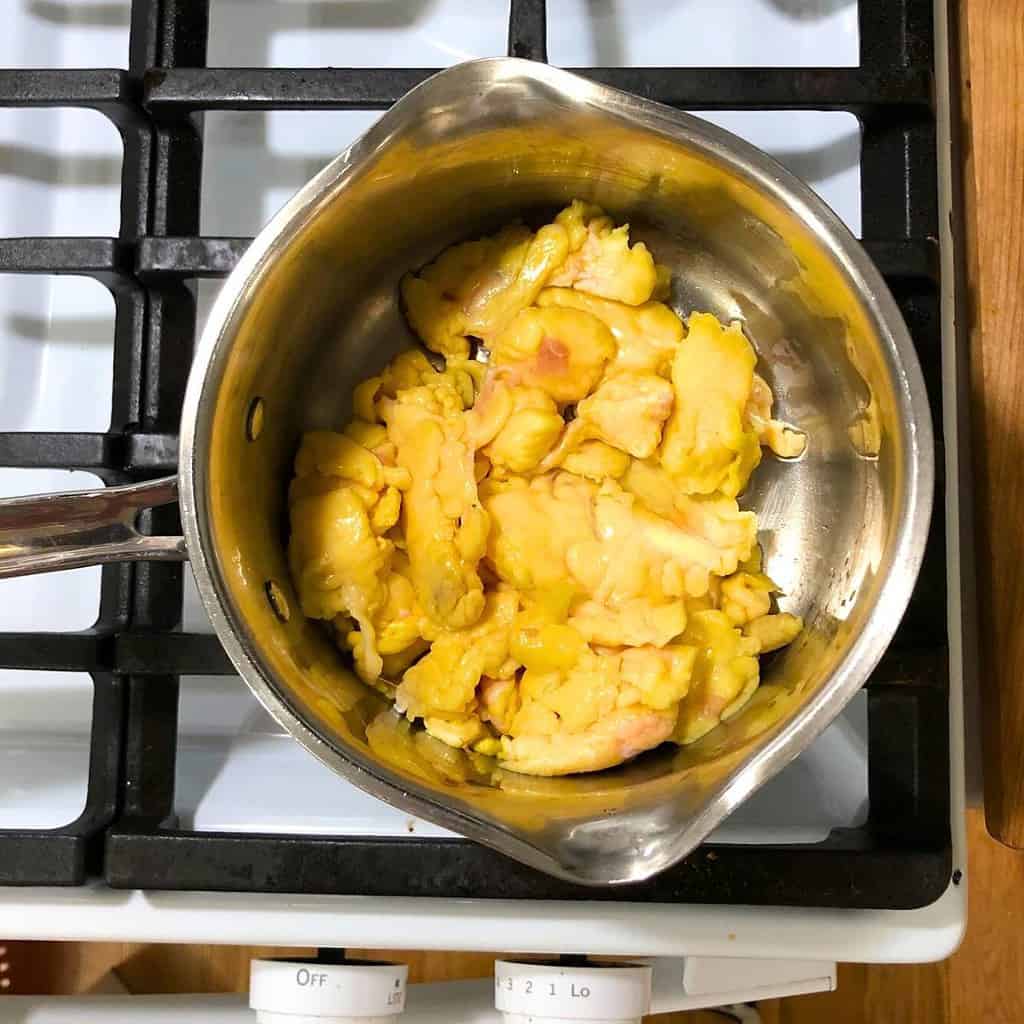
Heat the fat and stir it occasionally. The fat will begin to liquefy.
Cook the fat until it all melts and you have some golden brown “cracklins” floating on top of your rendered schmaltz. This is optional, but you can also add chopped onions to give your schmaltz a delicious and unique flavor.
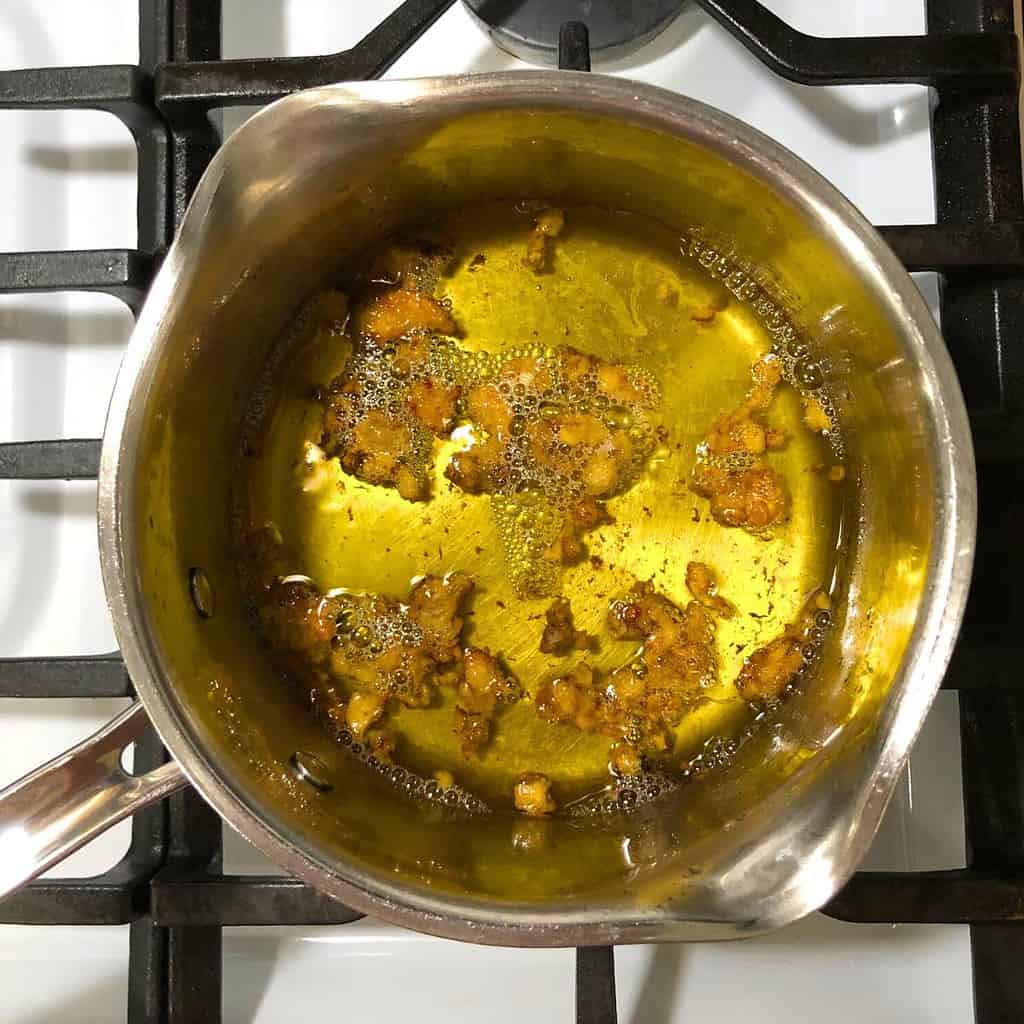
Next, get out a sterilized glass jar (mason jars or any other glass jar will do) and put a stainless steel funnel and fine-mesh sieve in it.
I don’t go overboard with sterilizing glass jars for rendered animal fats. If the jar has gone through my dishwasher and is in my cupboard, it works out great for me.
Pour the rendered fat into the strainer and jar.

You can drain the cracklins on a paper towel and eat them with a sprinkle of sea salt if you want, or you can give it to a dog as a treat.
Put a clean lid onto your jar and let it cool down a bit before you put your liquid gold into the refrigerator or freezer.
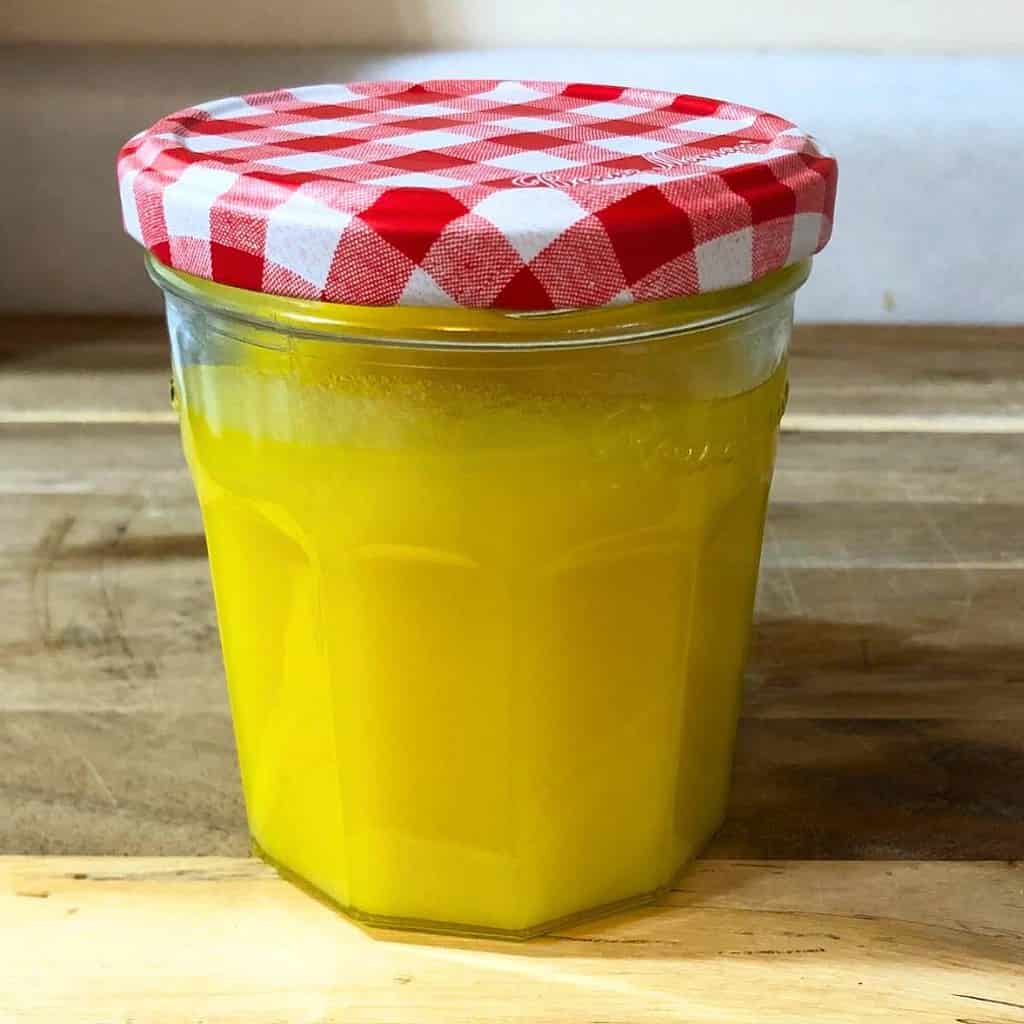
The next time you’re cooking a whole chicken or harvesting poultry, don’t forget to save the extra fat!
How To Store Schmaltz
The best way to store schmaltz is to keep it cold. Schmaltz will stay good in the refrigerator for a long time or you can freeze it for long term storage. Keep just one jar of schmaltz in your refrigerator as you work through it.
Since it’s a fat, it will eventually go rancid. So be sure to look at it and smell it before using it. It should smell fresh like the day you rendered it. If it’s off-putting, get rid of it or use it for other purposes other than eating.
To prevent mold from forming, always use clean utensils when you dig into your jar.
Leave a Comment!
Do you render and use animal fats? Let me know how you use them!
Other Related Posts
Preparedness Tips to Save Money on Food
It’s a Homestead Chicken Harvest Day! (Part 1)
Pin It For Later!
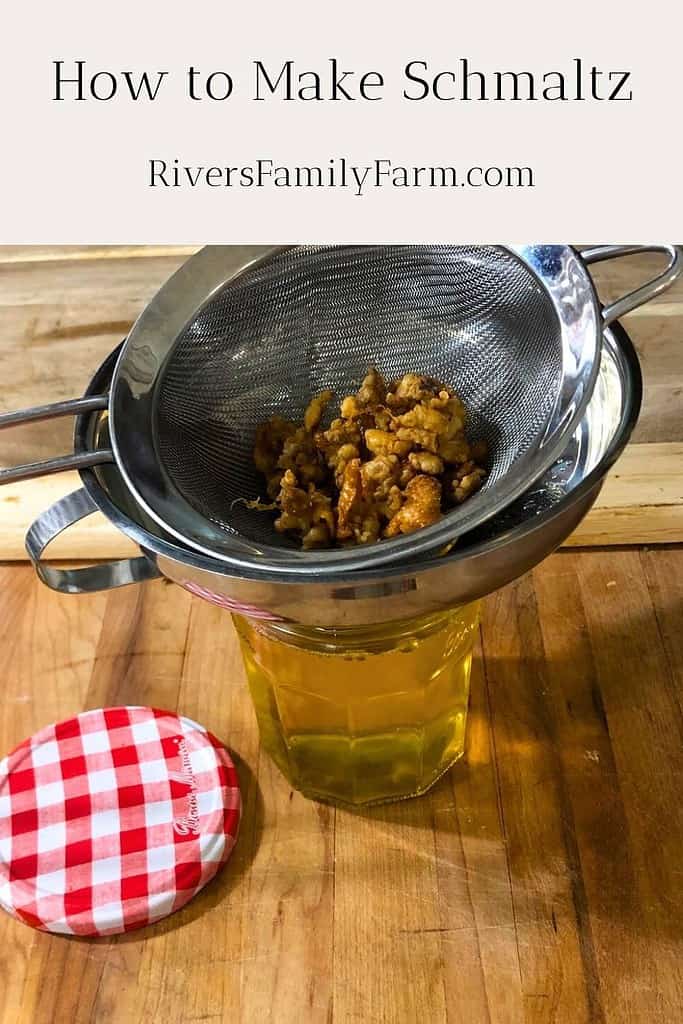

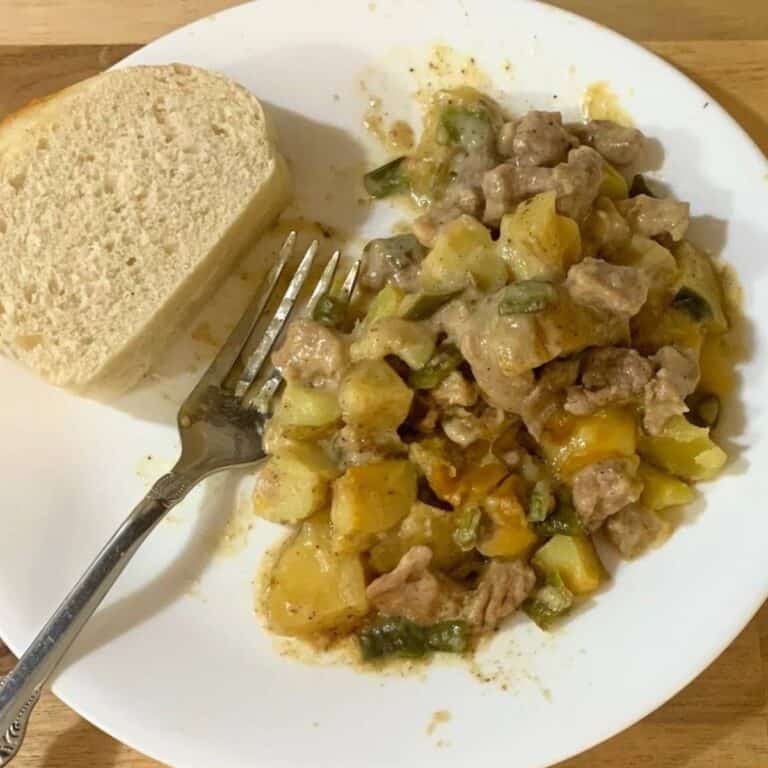
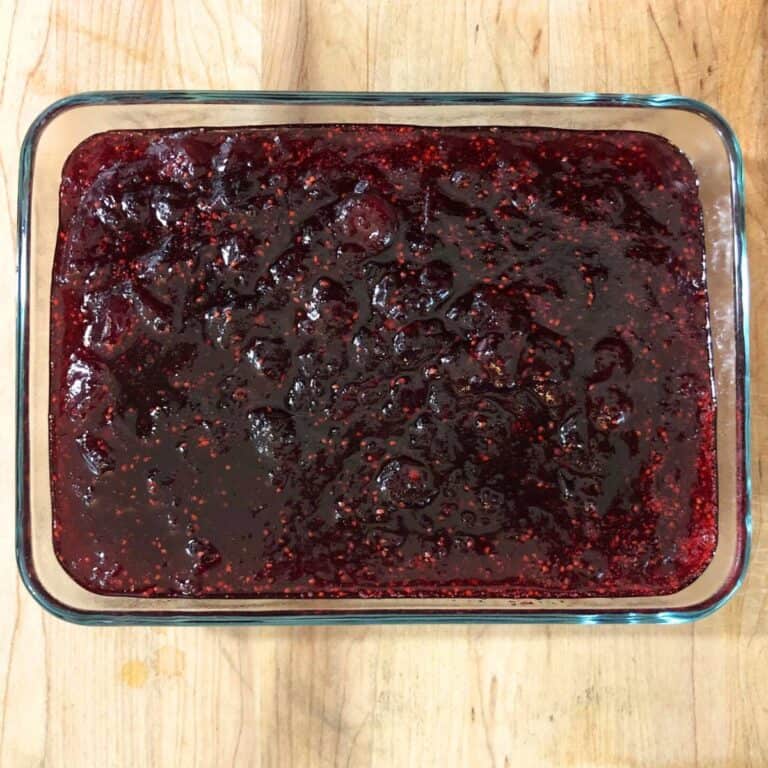
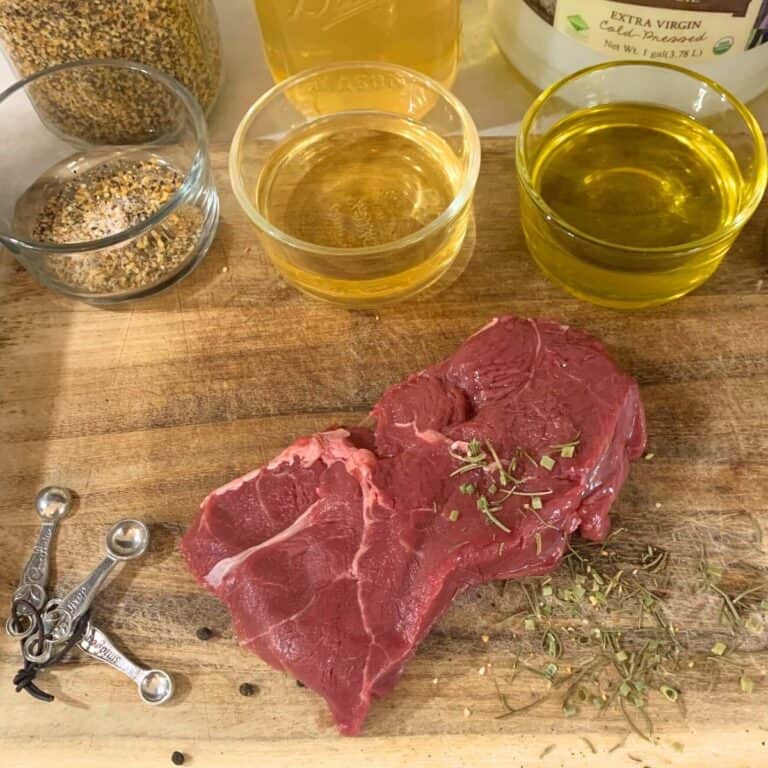
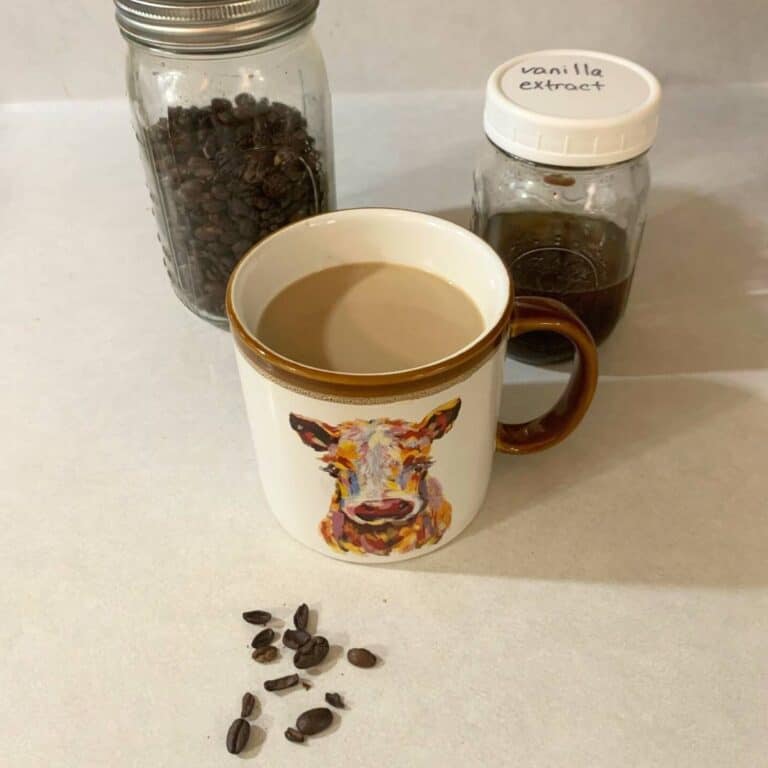
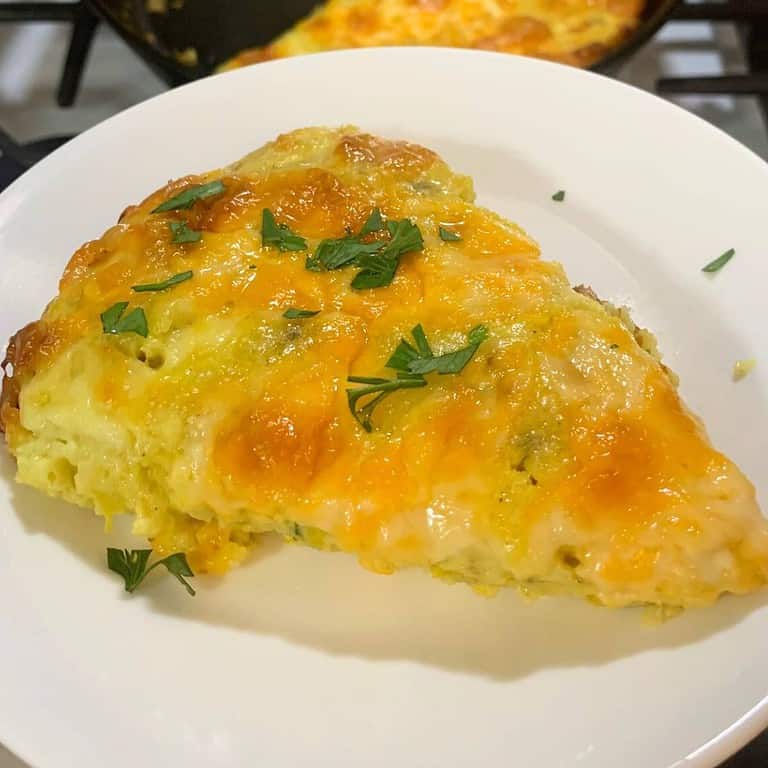
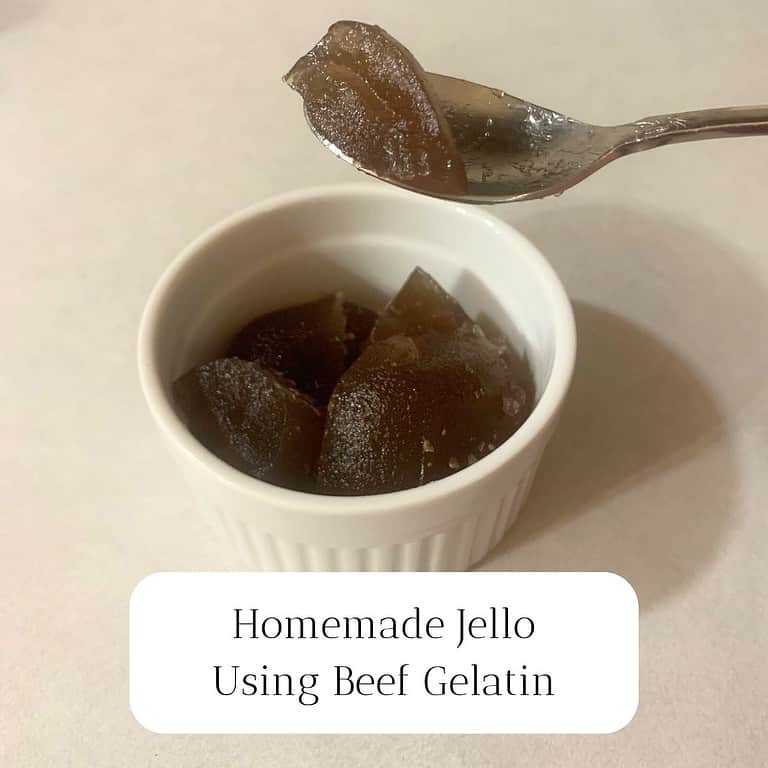
We butcher our own chickens and I have never thought to do this. I will give this a try this year. Thank you!
You’re very welcome!
I am getting my first batch of meat chickens soon and I wanted to render their fat so thanks for the tips!
How exciting! I have a couple of blog posts that might interest you: It’s a Homestead Chicken Harvest Day! (Part 1) and Homestead Chicken Harvest Day! (Part 2).
I love reading your posts and hearing about farm life and all the hard work that goes into it. I didn’t know you could melt down that yellow fat on the raw chickens and make oil to use in recipes. Thanks Rebekah!
Thank you and you’re very welcome!
Thanks, I appreciate your information. Our local butcher has chicken fat available around Thanksgiving. I like to use it in cooking, savory crust, roasted veg, and stuffing (dressing). I’ve been uncomfortable storing it, I think I’m going to try the sealed bags with the air removed for the freezer. I have a little tool to suck out the air from a masson jar when I keep it in the fridge. When you store it in the fridge do you pressure can it? I’m trying to get around it I guess.
Hi Richard, I love this! When I make my schmaltz to store in the fridge, I don’t pressure can it first. I repurpose old glass jars with tight-fitting lids…usually old jelly jars or something similar. I pick the smallest jar so that my schmaltz will reach near the top of the jar. That way when I put the lid on it, the hot air from the hot schmaltz escapes and creates its own vacuum seal when it cools on my counter. It’s a short cut if you plan on using your schmaltz within the next few weeks, but it’s not shelf-stable by any means. I’ve had schmaltz last a good month in my refrigerator before. But always be sure to use clean utensils when you go into your jar so that you don’t introduce any contaminants. That will make it last longer in your fridge. I don’t pressure can any of the animal fats I render down. I either store them in glass jars in the fridge (for short term use) or in my freezer (with a good inch of headspace at the top) for longer storage. I hope this helps!
Love, Rebekah
Can schmaltz be canned? Last time I made it, I didn’t use it up fast enough.
I’m not sure if schmaltz can be pressure canned, but it can’t be water bath canned since it’s a low acid food. Instead of traditional canning methods and storing it in the pantry, what I like to do is make the schmaltz, fill up a glass mason jar to near the top (small jars work best), add the lid, and let it cool on the counter. If you filled up your jar to near the top, it will create it’s own vacuum seal as it cools. Then, I store it in the refrigerator or freezer until I’m ready to use it. (And then I keep it in the fridge.) I searched my canning cookbooks for preserving fats, but didn’t see any recipe suggestions. I’d be careful not to deviate from authoritative canning cookbooks, since there is a science involved and safety is key. I hope this helps!
Love, Rebekah